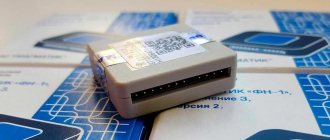The procedure for determining the VAT rate on an advance payment
When receiving an advance, the VAT rate is determined by calculation. Depending on the basic rate for goods, works, and services produced, it can be calculated as 18/118 or 10/110.
Example 1.
An advance was received against the supplier of goods taxed at a rate of 10%. The advance amount is 200 thousand rubles, it is necessary to calculate VAT.
VAT in this case will be
200 000,00 * 10 / 110 = 18 181,82
Example 2.
An advance payment was received for services taxed at a rate of 18%. The advance amount is 177 thousand rubles, it is necessary to calculate VAT.
VAT in this case will be
177 000,00 * 18 / 118 = 27 000,00
How to calculate VAT for an advance payment in 2021
The law also applies to the taxpayer when he may not calculate the amount of VAT on the advance payment. This happens when he:
- Sells products that are subject to a 0% export rate.
- Sells goods whose production time is more than 6 months. This list is approved by the government of the Russian Federation.
- Sells products that are tax free. In this case, tax is not charged upon shipment.
- Sells goods outside the Russian Federation. In this case, the goods are not subject to tax.
Upon receipt of an invoice from a supplier, the buyer’s accountant generates the following entries:
- 1 transaction – the advance payment to the supplier has been paid.
- 2 entry – the amount of VAT on the advance payment.
- Posting 3 - the amount of goods received.
- 4 entry – input tax, which goes to deduction.
- Posting 5 – restoration of advance VAT.
Recently, many entrepreneurs and enterprises have been working under prepayment contracts. When receiving an advance payment, the supplier has a lot of obligations. They concern not only contractual obligations, but also the allocation of VAT and the payment of advance taxes to the budget.
Often an accountant has a question about how to deduct VAT from advances received.
The tax is charged both upon shipment of goods and upon receipt of an advance payment. But double VAT does not occur, since the company has the right to deduction.
When the advance payment occurred, the recipient organization had obligations to the client. The supplier must ship the goods to the client within five working days, unless otherwise specified in the contract.
The amount of VAT itself is calculated from the tax rate on the product. It can be 10%, but more often it is 18%. An invoice is issued for the advance amount, which is subsequently sent to the buyer. Advance accruals occur in stages as follows:
- Based on NK 168, an invoice is issued within five working days.
- The invoice is recorded in the sales ledger.
- VAT is calculated at a certain rate for goods (10% or 18%).
Using an example, you can see how this happens technically.
They indicate that an advance payment was received from the buyer on the basis of supply agreements.
24.10.2018
- VAT was calculated on the advance received at the rate of 18/118 - in the amount of 18,000 rubles. (118,000: 118 x 18).
15.01.2019
- VAT on sales was calculated and presented to the buyer at a rate of 20% - in the amount of RUB 19,666.67. (118,000: 1.20 x 20%).
- accepted for deduction of VAT on advances in the amount of 18,000 rubles. – as calculated in 2021.
24.10.2018
- accepted for deduction of VAT on advances issued at the rate of 18/118 - in the amount of 18,000 rubles. (118,000: 118 x 18).
15.01.2019
- Input VAT was accepted for deduction at a rate of 20% - in the amount of RUB 19,666.67. (118,000: 1.20 x 20%);
- VAT on advances in the amount of 18,000 rubles was restored in the sales book. – how they were accepted for deduction in 2021.
Accounting with the Seller
20.11.2018
- VAT was calculated on the advance received at the rate of 18/118 - in the amount of 18,000 rubles. (118,000: 118 x 18).
25.12.2018
- an adjustment SF was drawn up for the advance received on November 20, 2018: changed: the amount of VAT is 18,305.08 rubles, the cost of services is only 120,000 rubles; tax rate 18/118 – unchanged;
- increase: tax 305.08 rubles, cost of services 2,000 rubles.
27.05.2019
- VAT on sales is calculated and presented to the buyer at a rate of 20% - in the amount of 20,000 rubles. (120,000: 1.20 x 20%);
- accepted for deduction of VAT on advances in the amount of RUB 18,305.08. – taking into account the adjustment SF issued on December 25, 2018.
The difference between the cost amounts and VAT is reflected
- page 070 Section 3: gr. 3 – 2,000 rub.
- gr. 5 – 305.08 rub.
Calculation of “delta” by cost and tax:
- 120,000 – 118,000 = 2,000 rubles. and 18,305.08 – 18,000 = 305.08 rubles.
The buyer paid additional cost
The preferential VAT rate of 10% will remain in 2021. Therefore, organizations that sell goods subject to VAT at a rate of 10% will apply the tax in the same manner.
Also, the changes will not affect the 0% VAT rate for transactions specified in Art. 164 of the Tax Code of the Russian Federation, in particular, when selling goods for export and providing international transportation services.
Supplier: if goods (works, services) are sold in 2021, and payment is received in 2021, then VAT must be charged in 2021 at a rate of 18%. When receiving payment in 2021, there is no need to adjust the VAT amount previously presented to the buyer. Starting from January 1, 2021, sales are carried out at a rate of 20%.
Buyer: if goods (work, services) are received from a supplier in 2021 and paid for in 2021, then input VAT is deductible at a rate of 18%. All subsequent payments for goods (work, services) received are based on the VAT rate in effect at the time of shipment and reflected by the supplier in the invoice.
For further sales in 2021 and later of the specified goods purchased in 2021, input VAT is deductible, as stated above, at a rate of 18%. Starting from January 1, 2019, VAT on sales is charged at a rate of 20%.
Supplier: if in 2021 a 100% prepayment is received for the sale of goods (works, services), which will take place in 2021, then VAT on the advance received in 2021 is charged at the calculated rate of 18/118. The same amount of VAT in 2021 is accepted for deduction when selling goods (works, services), which occurs at a VAT rate of 20%.
If in 2021 a partial prepayment is received for the sale, which will take place in 2021, then VAT on the advance received in 2018 is accrued for payment at the calculated rate of 18/118. When selling goods (works, services) in 2021 at a rate of 20%, VAT on a partial advance in the amount calculated at the rate of 18/118 is deductible.
Buyer: if goods (work, services) are fully paid for in 2018 and received in 2021, then VAT on the advance payment issued in 2018 is deductible at the calculated rate of 18/118. In 2021, after goods (works, services) are accepted for accounting, VAT from a previously paid advance is restored at the calculated rate of 18/118 based on the supplier’s advance invoice, VAT is accepted for deduction at a rate of 20% based on the invoice issued by the supplier at implementation.
If goods (work, services) are partially paid for in 2021 and received in 2021, then VAT on the amount of the partially paid advance in 2018 is deducted at the calculated rate of 18/118. In 2019, after goods (works, services) are accepted for accounting, VAT on a partially paid advance is restored in the amount in which it was previously accepted for deduction and, based on the supplier’s invoice for sales, VAT is accepted for deduction at a rate of 20%.
Letter of the Federal Tax Service of Russia dated October 23, 2018 No. SD-4-3/ [email protected] “On the procedure for applying the VAT tax rate during the transition period.”
Example: a contract concluded in 2021 stipulates that the buyer in 2021 pays an advance in the amount of 50% of the contract amount. The cost of goods (work, services) in accordance with the contract is 118,000 rubles, including VAT 18%. The parties signed an additional agreement to the contract, providing for the preservation of the cost of goods (work, services) without VAT and an increase in the amount of VAT due to changes in the rate. As a result, the final amount of the contract changed to 120,000 rubles, including VAT.
59,000 x 18/118 = 9,000 ₽.
The buyer deducts VAT in the amount of RUB 9,000 based on the supplier's advance invoice.
In 2021, when selling goods (works, services) using a VAT rate of 20%, the total sales amount is 120,000 rubles, including VAT 20,000 rubles.
The supplier charges VAT on sales in the amount of 20,000 ₽ and at the same time deducts VAT on the previously received advance in the amount of 9,000 ₽.
The buyer deducts VAT in the amount of 20,000 rubles based on the supplier's invoice for sales and at the same time restores the payment of VAT from the previously issued advance in the amount of 9,000 rubles.
As a result, the buyer must pay an additional 61,000 rubles (120,000 – 59,000 rubles) to the supplier in 2021.
If in 2021 the supplier sold goods (works, services) subject to VAT at a rate of 18% and issued an invoice to the buyer, and in 2021 the parties agreed to change their price or quantity, then the VAT rate is indicated in the adjustment invoice, valid on the date of sale, that is, 18%.
If in 2021 the supplier sold goods (works, services) subject to VAT at a rate of 18% and issued an invoice to the buyer, and in 2021 a technical error was discovered in this invoice, then the supplier issues a corrected invoice with the VAT rate, indicated on the original invoice, i.e. 18%.
Please note: in situation 5 we are talking only about services provided by foreign performers in electronic form, and not about all services.
Services provided in electronic form, for example, include advertising services on the Internet and the provision of advertising space on the Internet (for the list of services, see Article 174.2 of the Tax Code of the Russian Federation).
Services provided electronically do not include:
- sale of goods (work, services), if they are ordered via the Internet, but delivered (performed) without using the Internet (for example, by mail, courier);
- implementation (transfer of rights to use) computer programs, databases on tangible media (disks, flash drives);
- consulting services provided via email (correspondence);
- Internet access.
When paying an advance to a foreign supplier in 2021, the tax agent calculates VAT at the rate of 18/118. After accepting works (services) for accounting on the basis of documents received from a foreign supplier, the tax agent has the right to deduct VAT.
If the final settlement with a foreign supplier is made after receiving the results of work performed (services provided) in 2021, then the tax agent calculates and pays VAT at the rate of 20/120, taking for deduction the VAT previously calculated on the advance payment at the rate of 18/118.
- Companies exempt from VAT
- Companies operating under special regime
- Companies whose products are exported or engaged in sales outside the Russian Federation
- Goods or services sold by the organization are not subject to VAT or are taxed at a rate of 0%
- Advance received for goods with a production period of more than six months
Salesman.
In this case, the Federal Tax Service recommends that the seller issue an adjustment invoice to the buyer for the cost of the returned goods. And on the basis of this invoice, deduct the VAT paid earlier upon sale. Moreover, if in column 7 of the sales invoice a rate of 18% was indicated, then in column 7 of the adjustment invoice the rate of 18% is also indicated. Moreover, this recommendation also applies to the return of goods purchased after 2021. Buyer. From his side everything is simple. He recovers VAT based on the adjustment invoice received from the seller.
Peculiarities of determining VAT on an advance payment if the advance payment and shipment belong to the same tax period.
Despite the fact that it seems logical in this case to calculate VAT only once, from shipment, regulatory authorities insist otherwise.
According to the regulatory authorities, VAT must be charged first on the advance received, then on the sale. And accordingly, issue two invoices - for the advance received and for the sale.
Then, when filling out the purchase ledger, you must record the VAT on the advance payment as a tax deduction.
The VAT Declaration must reflect both cases of VAT calculation - both from the advance received and from the sale, as well as the VAT deduction.
Courts often take the opposite point of view and believe that there is no need to charge VAT on advances received if both the advance and the sale fall within the same tax period.
Table 1 shows the documents for each case.
Table 1.
| No. | VAT on the advance, if the advance and sale are in the same tax period | Document |
| 1 | VAT is charged, an invoice needs to be issued | Letter from the Ministry of Finance of the Russian Federation dated 10/12/2011 No. 03-07-14/99, Letters from the Federal Tax Service of the Russian Federation dated July 20, 2011 No. ED-4-3/11684, dated March 10, 2011 No. KE-4-3/3790, dated 02/15/2011 No. KE-3-3/ [email protected] , Resolution of the Federal Antimonopoly Service of the North Caucasus District dated 06/28/2012 No. A32-13441/2010. |
| 2 | There is no need to charge VAT | Determination of the Supreme Arbitration Court of the Russian Federation dated September 19, 2008 No. 11691/08, Resolutions: FAS of the North Caucasus District dated May 25, 2012 No. A32-16839/2011, FAS Volga District dated September 7, 2011 No. A57-14658/2010 |
Is it necessary to pay VAT on advances ↑
There are a lot of nuances with paying advances for goods, work or services. And often accountants do not know what to do in a given situation. On some sites you can find VAT advances for dummies.
Received
The buyer is obliged to take into account the “input” VAT from the advance paid to the seller and the VAT taken into account from the advance.
It is then accepted for deduction when the invoice for all purchased goods is issued and payment is made in full.
This also applies to those transactions that occurred in different tax periods for the payment of VAT.
The buyer accepts VAT for accounting on the basis of an invoice, which is issued by the seller for each advance payment.
In other words, no matter how many advances the buyer pays, the seller is obliged to issue an invoice for each, and the buyer is obliged to register these invoices in his purchase book.
Video: VAT on Advance If the buyer paid an advance, and the amount of goods shipped turned out to be less than the advance payment, then the buyer must restore VAT in the part that is equal to the amount of goods shipped or work and services performed.
Issued (paid)
The situation is similar with issued invoices. The seller pays VAT to the budget on each advance payment that the buyer pays to him.
This is stated in paragraph 1 of Art. 172 of the Tax Code of the Russian Federation.
Then, each advance tax is taken as a deduction when calculating the total tax base for the shipped goods.
If the advance payment is returned to the buyer, the seller is still entitled to a tax deduction, only within a year from the date of return of the advance payment.
It is worth remembering that the invoice must be drawn up in full accordance with the Rules for the preparation of these documents. Otherwise, problems with deductions may arise for both the buyer and the seller.
However, neither the seller nor the buyer can deduct VAT from the advance payment if the goods sold are taxed at a rate of 0%, or one of the parties applies a preferential tax regime, that is, is not a VAT payer.
What VAT rates apply to food products? See the article: what percentage is VAT. An example of filling out a VAT return can be found here.
VAT is deductible on the basis of invoices. If there is no such document, then the deduction is impossible.
You can deduct VAT on a check that was issued when purchasing goods in cash using an advance report.
Procedure for issuing invoices
The rules for issuing invoices are specified in Decree of the Government of the Russian Federation dated December 26, 2012 No. 1137.
This is still a document of a strict unified form, which must contain many information about both the seller and the buyer.
The “Correction” column has appeared in the new sample invoice. It is intended to correct a previously made mistake.
This column indicates information about the erroneous document, in its place a new one is created.
Other changes:
- in the “seller” column you can now only indicate its full name, without other details;
- in the line “Currency: name, code” it is necessary to enter information in full accordance with the All-Russian Classifier of Currencies;
- all amounts are entered into the document without rounding, together with kopecks and other “hundredths” units;
- The “Units of Measurement” column is divided into 2 columns – “Code” and “Symbol”. Information is entered here in accordance with the All-Russian Classifier of Units of Measurement;
- “Country of origin” is also divided into 2 halves – “Code” and “Short name”. They are filled out in accordance with the All-Russian Classifier of Countries of the World.
In the invoice field you must enter the serial number of the document. If the tax authorities do not find any document numbers during the audit, the taxpayer may have problems.
In the “Corrections” column when filling out the document for the first time, you need to insert “not entered”, then a dash will be automatically added in this column.
If changes were made, then when selecting “Made” you will need to select the serial number of the document that is being corrected and the serial number of the correction.
If an invoice is issued for an advance payment, then in the column “For advance payment” you need to put “Yes”. In this case, in the columns “Consignor and his address”, as well as “Consignee and his address” there will be dashes.
In the “Document currency” you need to select the currency of the transaction, and in the line “To the payment document” you need to enter all the numbers of payments and other documents for which funds were received as payment for this product.
In the “Information about the seller” line, you need to select “Organization”, if the seller is a legal entity, or “Individual entrepreneur”.
You also need to indicate all the details of these parties, including INN and KPP, as well as the full name of the manager and chief accountant.
The remaining fields must be filled out in accordance with the above Procedure.
Calculation examples
In February 2021, ABC LLC enters into an agreement with OPR LLC for the supply of goods for a total amount of 354 thousand rubles (including 54 thousand is VAT). The agreement provides for an advance payment of 40% of the transaction amount.
ABC LLC transfers the advance in February, and the goods are shipped in April. The seller's actions are as follows:
First. He issues an invoice for the advance amount:
354,000 * 0.4 = 141,600 rubles.
The VAT amount is equal to:
(141,600 * 18) / 118 = 21,600 rudders.
These actions must be done in February. 1 copy of the invoice must be given to the buyer, and the second must be registered in your sales book.
Second. In April, after the entire shipment has been shipped, the seller issues an invoice for the entire transaction amount, that is, 354,000 rubles, including VAT of 54,000 rubles.
Third. Thus, in the 1st quarter of 2021, the seller paid VAT to the budget in the amount of 21,600 rubles, and in the second:
54,000 – 21,600 = 32,400 rudders.
Features of issuing an invoice when receiving an advance
Upon receipt of the invoice, the seller must issue an invoice for the advance received.
The procedure for issuing an invoice for an advance payment is defined in Decree of the Government of the Russian Federation of December 26, 2011 N 1137.
The period for issuing such an invoice is 5 calendar days, because the same as when issuing a regular invoice.
The invoice is issued in two copies, one of which is transferred to the buyer.
For an advance invoice, it is important to indicate in line 5 the details of the payment document for the advance received.
When indicating the names of goods, works, services, you can use their generic name, which allows you to identify goods, works, services.
Filling out the columns begins with column 7, which indicates the estimated rate of 10/110 or 18/118 (







